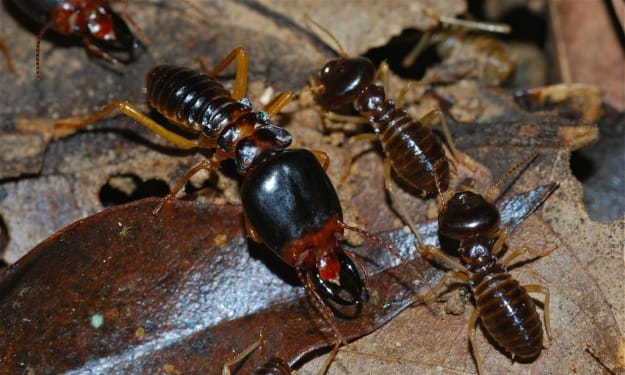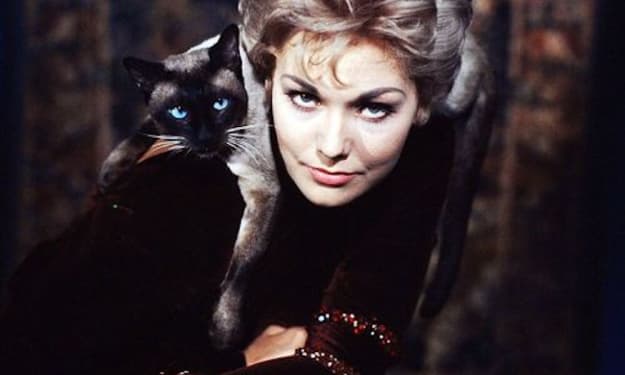How to Keep Killer Whales Innovated Through Creativity
A new study conducted on killer whales in human care shows how these complex marine mammals can get creative daily.

On September 20th, 2022, the peer-reviewed journal, Animal Cognition, published a study on how killer whales and apex predatory mammals get creative in their oceanic habitats. The study was part of an ongoing collaboration between Dr. Heather Manitzas Hill at St. Mary’s University, MarineLand France, SeaWorld San Antonio, and the Dolphin Communication Project. The study, previously done with bottlenose dolphins, allowed the researchers to ask the animals to do new behaviors of their own choosing as a form of enriching exercise for the animals that enable them to think creatively (Heather Manitzas Hill et al. Anim Cogn. 2022)
Background
Out in nature and in human care, many animal species show unique creative variations of common behaviors expressed in forms of communication, breeding, forging, socialization, and play. For example, killer whales in human care have been observed using fish pieces to lure birds close enough to catch them while bottlenose dolphins have been reported engaging in locomotion play when riding pressure waves produced by boats and ships (Heather Manitzas Hill et al. Anim Cogn. 2022). In addition, cetaceans in both the wild and in human care play with a variety of objects such as human-provided environmental enrichment devices, self-made bubbles, feathers, seaweed, and sponges.
Other recorded behaviors among cetaceans include sponges and bubbles during forging, ice fishing techniques used to capture seals and penguins on icebergs, and intentional stranding to catch various prey (Heather Manitzas Hill et al. Anim Cogn. 2022). Many researchers agree that behavioral flexibility in all animal species is seen when they’re forging but it’s also a sign that these flexible adaptations suggest adaptive functioning in non-human animals. In animals, flexible thinking is considered a sign of the complex cognitive functioning they exhibit daily (Heather Manitzas Hill et al. Anim Cogn. 2022). However, creativity in non-human animals is difficult to examine because it requires the construction of how to explain the gap between events and responses because creative behaviors depend on a combination of knowledge and cognitive abilities that are rooted in what they’ve learned in the past.
Currently, there are relatively few tests researchers can use to examine creativity in animals. One is the Torrance Tests of Creative Thinking, or TTCT (Heather Manitzas Hill et al. Anim Cogn. 2022), which was developed from an approach to the theory of creativity. Researchers have recognized four variables to assess creativity: fluency, flexibility, originality, and elaboration. That said, TTCT was not originally designed to study behavior in non-human animals but in 2004, researchers suggested that with might be a foundation to help better understand creativity in animals (Bain, Jaspers.2004).
The theory of animals having the ability to have variety in their behavior was first investigated by Karen Pryor in the 1960s. She was training rough-toothed dolphins at Sea Life Park in Hawaii to respond to a discriminative stimulus (SDs) with a novel behavior that hadn’t been performed yet (Heather Manitzas Hill et al. Anim Cogn. 2022). Her goal was to add additional actions to her animals’ behavioral repertoires; so, she and her team developed training methods that produced “creative” behaviors”. These methods, which were originally intended to be used as a game to help train the dolphins, would eventually be turned into modern training techniques that are used for a variety of animals under human care today (Heather Manitzas Hill et al. Anim Cogn. 2022).
How’s It Applied to Killer Whales?
When discussing creative behavior in killer whales, it’s important to remember killer whales live in matriarchal societies that are shaped by maternal kinship and natal association (Heather Manitzas Hill et al. Anim Cogn. 2022). Yet, the way these kin-based pods are structured varies depending on the population. For example, both Northern and Southern Resident killer whale populations are known for having their own unique vocalizations that may differ from pod to pod. This is also true for killer whales living in human care they too have developed their own distinct vocalizations both individually and as distinct pods (Heather Manitzas Hill et al. Anim Cogn. 2022). In addition, the Northern and Southern killer whales also have their own methods of foraging for prey.
The purpose of the study in question was to investigate the creativity of killer whales in zoological settings based on age and sex (Heather Manitzas Hill et al. Anim Cogn. 2022).
Methods
This study involved nine killer whales living at SeaWorld San Antonio and at Marineland France. The animals experienced the same training protocols that had them responding to hand cues by their trainers. In San Antonio, the whales were trained by a team with lead trainers who were assigned to individual animals (Heather Manitzas Hill et al. Anim Cogn. 2022). Meanwhile, in France, most of all training was conducted by a primary trainer. These sessions allowed the animals to become familiar with the cue requesting “do something new” such that each animal could respond with different behaviors. The training lasted about a year at both facilities for testing, which occurred after training was completed (Heather Manitzas Hill et al. Anim Cogn. 2022).
During the study, training consisted of multiple sessions over a period of weeks for each animal and a number of sessions were recorded for the animals. During these sessions, the animals received the single “create” cues, and responses were variably reinforced (Heather Manitzas Hill et al. Anim Cogn. 2022). During training sessions, the trainers could prompt the animals if they displayed repetitive behaviors; this is because any behavior was considered to be acceptable as long as it was different to the just previous action. Once the animals responded to the different cues, they were rewarded with food, ice, enc\environmental enrichment devices, and rubdowns. The sessions usually lasted from around five to eight minutes over the course of 8-10 trials (Heather Manitzas Hill et al. Anim Cogn. 2022).
When conducting the testing portion of the study, each session was video recorded and videos were coded them by two naive scorers: AM and CLR. AM coded all trials per session by each animal while CLR only coded 25% of the trials per session for reliability (Heather Manitzas Hill et al. Anim Cogn. 2022). For the videos from France, a trainer reviewed all test videos to document their animals’ behavioral responses and to translate audio narratives from French to English. The trainer went on to identify each behavior presented by each animal and identified which action was new and which was repeated (Heather Manitzas Hill et al. Anim Cogn. 2022). This is when IS, a third coder, was brought into play, who coded 25% of the trials per session for each animal - full agreement resulted and allowed for reliability confirmation. All of the correct behaviors were then coded into four creativity variables assess: fluency, flexibility, originality, and elaboration (Heather Manitzas Hill et al. Anim Cogn. 2022).
What did the results show?
The results of the study showed that killer whales do, in fact, demonstrate high fluency, originality, elaboration, and flexibility in their behaviors (Heather Manitzas Hill et al. Anim Cogn. 2022). While younger whales are more likely to demonstrate more variable behaviors than their older counterparts, males seem to display less of these behaviors than females. This is an impression that’s driven more by the age and size of the animals in question (Heather Manitzas Hill et al. Anim Cogn. 2022). This means that when it comes to thinking and behavior, killer whales are truly dynamic in nature.
What does it mean for killer whales both in the wild and in human care?
For killer whales in human care, rather than banning the keeping of this species in zoological settings for any given purpose, this study could be applied to finding ways to improve already existing killer whale habitats in human care and to find better whales to improve their well-being. This could include investing in new environmental enrichment devices that encourage creativity or even offering up-close encounters with them to the public outside of shows and public presentations like many facilities do for other marine mammals.
As for their wild counterparts, the focus could be aimed at identifying food sources that the animals feed on such as certain species of fish, stingrays, and marine mammals by putting in efforts in establishing more protection for them. For example, salmon is a favorite among fishing enthusiasts as well as a popular delicacy. Yet, this primary food source of the Southern Resident killer whale population is listed as “endangered” due to overfishing, habitat loss, pollution, and the effects of climate change. The study could be applied to addressing the population decline of wild salmon by establishing better protection for wild populations, breaching dams that threaten their ability to reproduce, putting First Nations communities in charge of wildlife conservation management, and employing them to replant breeding grounds.
This study examined how killer whales get creative is a win for both wild and aquarium-born killer whales.
Sources
Hill, H. M., Weiss, M., Brasseur, I., Manibusan, A., Sandoval, I. R., Robeck, T., Sigman, J., Werner, K., & Dudzinski, K. M. (2022). Killer whale innovation: teaching animals to use their creativity upon request. Animal cognition, 25(5), 1091–1108. https://doi.org/10.1007/s10071-022-01635-3
QAQBain, S. K., & Jaspers, K. E. (2010). Test Review: Review of Kaufman Brief Intelligence Test, Second Edition: Kaufman, A. S., & Kaufman, N. L. (2004). Kaufman Brief Intelligence Test, Second Edition. Bloomington, MN: Pearson, Inc. Journal of Psychoeducational Assessment, 28(2), 167–174. https://doi.org/10.1177/0734282909348217
About the Creator
Jenna Deedy
Zoo and Aquarium Professional, Educator, Cosplayer, Writer and B.A. in Psychology whose got a lot to share when it comes to animals, zoos, aquariums, conservation, and more.
Instagram: @jennacostadeedy






Comments
There are no comments for this story
Be the first to respond and start the conversation.